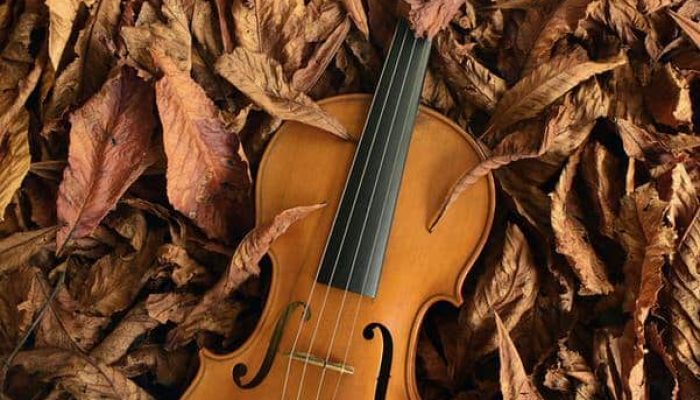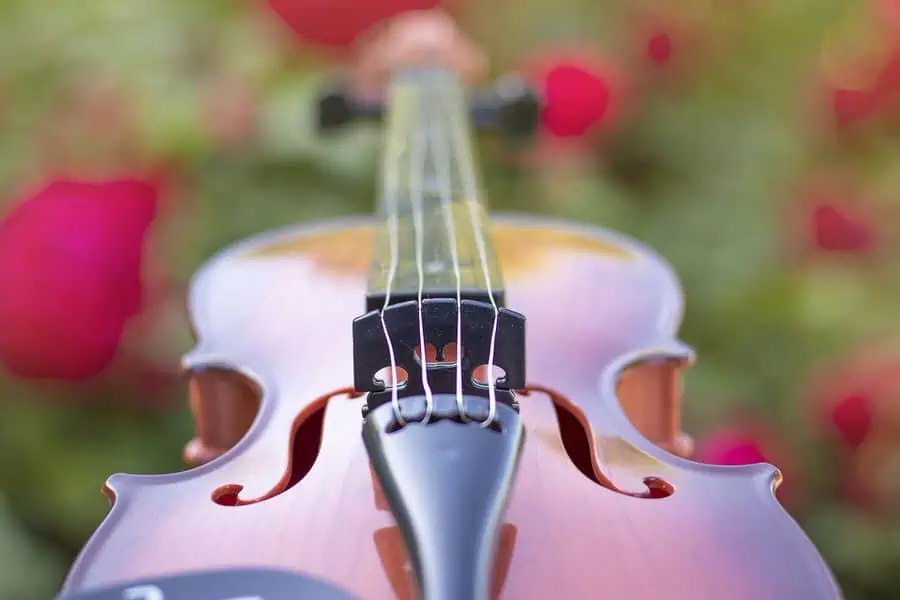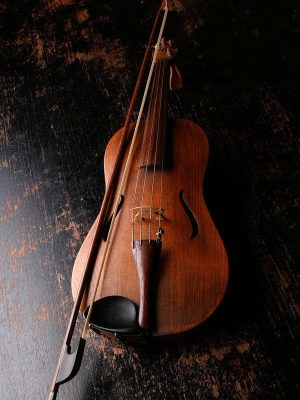Violin Facts
20 Interesting Facts About The Violin
The Violin stands out as the top high-sound instrument in the String family of an orchestra. Over the years, the Violin has gained fame for mimicking the human voice, not just in how it looks, but also in its melody. It’s no surprise that Italy, celebrated for Opera and the beauty of the human voice, is where the Violin first saw the light of day.
Members of the Violin family include the Violin itself, the Cello, the Double Bass and the Electric Violin. Different types of Violins have presented themselves throughout history, such as the Horn-Violin, which unsurprisingly, creates sound using a horn rather than a soundbox.
Here are twenty interesting facts about this compelling instrument.

1. The first Violin was invented in the 16th Century

Most historians believe the first ever Violin was created in the early 16th Century in Northern Italy. This area is thought to have maintained the violin-making tradition for many centuries. Then and since, maple and spruce are the two types of wood favoured by Violin-makers. Both woods are readily available in the Lombardy region.
2. The world’s most expensive Violin
The Vieuxtemps Guarneri is thought to be the most expensive Violin in the world. The Guarneri del Gesù instrument sold for a cool $16 million dollars, that’s (£10.5 million)! The instrument’s new owner anonymously donated the historic instrument on loan to violinist Anne Akiko Meyers, on loan for the rest of her life. What a generous offer!

3. Violins are very complex. Violins are made up of...
4. What are the different types of Violin?

Today:
- The Violin
- The Electric Violin, as suggested by its name, uses electricity to generate sound. No F-board is required. The Electric Violin will produce a more acoustic sound when plugged into an amplifier.
- The Semi-Electric Violin is also known as the Electric-Acoustic Violin and its internal acoustics mean that it still produces an acoustic sound even when it’s not plugged into an amplifier. For this reason, it is also known as the Electric Pick-Up Violin.
Historically:
- Pre-Baroque stringed instruments existed, like the Baroque violin, which was the forefather of the Violin.
- The Classical Violin was invented in the late 18th, early 19th Century. The classical Violin has a slimmer neck and a higher string tension than the standard Violin.
- The Stroh Violin, which is often referred to as the Horn-Violin was developed by John Stroh in the late 19th Century. This Violin uses a horn rather than a sound box to project sound.
5. How many strings?
The Violin has four strings. These are, from high to low; E, A, D and G.
6. The Violin is a String Instrument
The string family is the largest in a modern-day orchestra. The string family is made up of the Violin, the Viola, the Cello and the Double Bass.
8. The world’s largest Violin
The world’s largest Violin is the brainchild of Markneukirchen Master Luthier, Ekkard Seidl. This epic instrument measures in at 5 metres tall and weighs 397lbs (180kg). It took Ekkard Seidl 2000 hours to construct. You can marvel at the mammoth-sized Violin here.

9. The origins of the Electric Violin

The Electric Violin was born in the 1920s, in the era of Blues and Jazz. Jazz and Blues musician, Stuff Smith began to play around with modifying Violins. In the 1930s and 1940s manufacturers like The Vega Company and The Electro Stringed Instrument Corporation began to produce Electric Violins. The first solid model was released in 1939 by Vega.
10. The Electric Violin’s impact on Rock music
Originally, the Violin was only considered to work in creating Classical, Blues and Jazz music. However, in the 1960s rock artists began to experiment with Electric Violins and found them to suit and amplify their style. The WHO are known for some of the best Electric Violin solos ever recorded, the unique sound of U2’s “Sunday, bloody Sunday” was created with an Electric Violin (played by Steve Whickham) and Bob Dylan used an Electric Violin to record his protest song, “Hurricane”, to name just a few examples.
11. Manufacturers continue to perfect the Electric Violin
Electric Violins didn’t reach their maturity in the 1970s and many manufacturers continue to research and modify models. The Electric Violin is less established than the Violin or Cello and is often seen as an experimental instrument. Luthier Yuri Landman created an Electric Violin with 12 strings, which are clustered in groups of four with three strings in each cluster.
12. How does the Violin produce sound?
How is the brilliant tone characteristic of the Violin created? Vibrations from the strings are transmitted to both the top and bottom plate through the bridge. This reverberates within the Violin’s hollow body, to provide its rich sound.
The sound post is also very important. This is a post sandwiched between the top and bottom plate underneath the bridge. It transmits vibrations from top to bottom plate and also serves to preserve the shape of the Violin’s body. The piece sitting under the bridge in the Violin, on the right-hand side is the sound post.
13. Violin on the brain
Here’s some food for thought. Research studies show Violinists have faster cognitive processing speeds than the average person. Additionally, Harvard University concluded that early Violin training improves the memory. Researchers studying the brain’s plasticity regularly use the Violin to investigate how much the brain can adapt. What more reason do you need to learn?
14. How many calories per hour does playing the Violin burn?
Playing the Violin burns roughly 170 calories per hour. Ditch your work-out and get practicing!

15. Where does the name come from?

The word ‘Violin’ comes from the Medieval Latin word, ‘vitula’, which means ‘stringed instrument’ and also ‘female cow’!
16. How many hairs are in a Violin bow?
Violin bows are usually made up of 150 to 200 individual hairs. Bows can be made up of a variety of materials, such as nylon and horse-hair.
17. Alternative materials Violins have been made up of
Way back in the day, Violin strings were made from sheep, or other animal’s intestines, commonly known as Catgut. The gut was stretched, dried and twisted… how pleasant! Other materials Violins have been made up of, other than wood, include; standard and solid steel, synthetic materials, other metals and are even sometimes plated with silver… fancy!
18. The Violin in the orchestra
Before the roll of Conductors, the Violin was seen to be the leader of the orchestra.

19. What’s the world record of cycling backwards playing the Violin? (In case you were wondering!)
The world record of cycling backwards whilst playing the Violin (crazy, we know), stands at 60.45 km, achieved in 5 hours and 8 seconds.
20. Violins across the world
Indian Violinists sit cross-legged when playing the Violin, resting the scroll of the Violin at their feet and the bottom of the Violin underneath their chin – pretty nifty!

That's the end of our Violin Facts... So what now?

About the Author
Fiona Gibbs
Where Can You Find The Right Guidance?
Your search is over! The Founder of Ted’s List, Robert Emery, has a hectic career as an international conductor, record producer and pianist. Our objective isn’t to sell you highly-priced programs that you’ll never use. Our objective is to help you. Just like Robert wanted to help his son, Teddy, by obtaining trustworthy assistance from buddies who are actually world-class professional musicians.
Alarming fact coming up: I guess you didn’t realize that there is no responsibility for your instrumental teacher to have been professionally trained… But surely they require some form of qualification in order to take peoples cash? Not at all.. If you wanted to, you can turn around tomorrow and call yourself a music teacher! Crazy isn’t it…
You wouldn’t believe just how many violin teachers mix up their E string with their E mail, or don’t know the difference between double stops from their double vision! As a result of this madness, we try to be a safe and secure pair of hands – shedding light with truthful, well investigated reviews and suggestions from fully educated, outstanding professional musicians. A few of whom you’ll even recognise; or even seen in live performance!
Attention: Get The 4 Things I’ve Been Reviewing This Week
4-Feature Friday does precisely what it says on the tin; delivers you an email every Friday with four of the most remarkable things I’ve found that week.
We promise no junk. Merely one individual e mail, every week, with wonderful ideas and tips about anything I’ve discovered that I believe you’ll like. It could be songs, musical instruments, books, cool gadgets. Anything. Providing it’s terrific.
Only available for anyone who is a subscriber to the newsletter.
Read the next post in this series:




